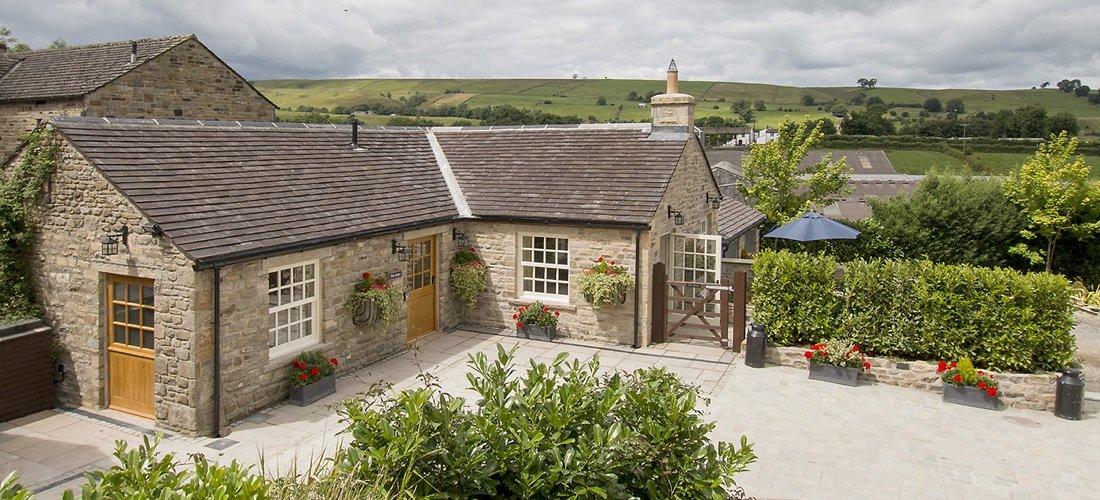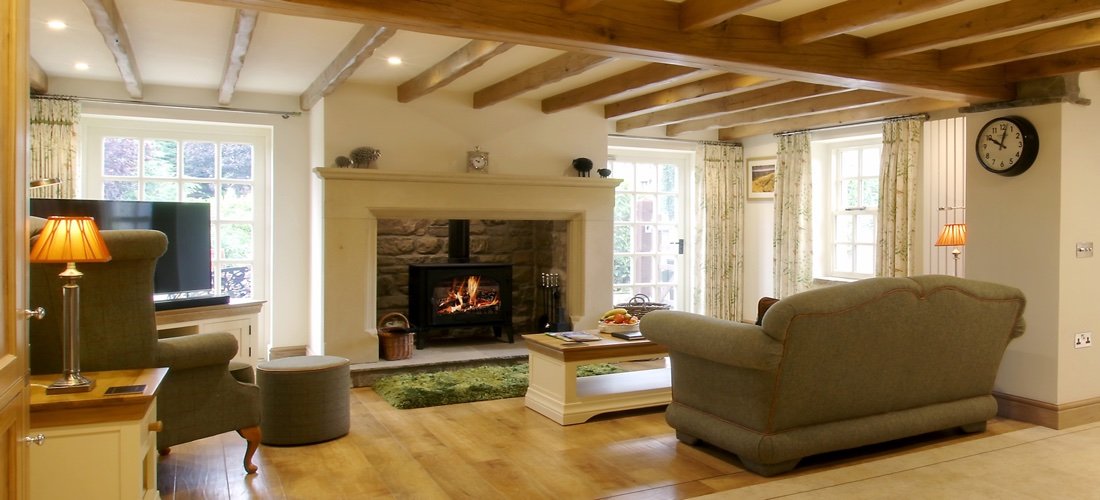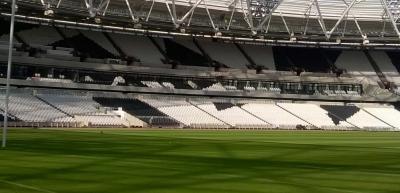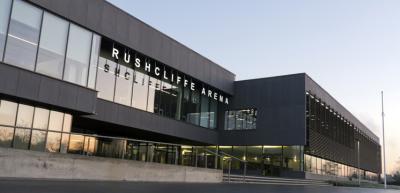Case study: Best Inclusive Design winner The Dairy, Cottage in the Dales
The first thing that springs to mind when you look at The Dairy in the Yorkshire Dales might not be that it's a holiday cottage suitable for guests with mobility, hearing and visual impairments (although it is). What you might well notice instead is that it's a well designed luxury property. Read the story of The Dairy...
Project vision - accessible luxury
The Dairy, in the grounds of Grade II listed Eastburn Farmhouse in Newbiggin, Bishopdale (in the Yorkshire Dales National Park), is a luxurious yet accessible holiday cottage which was extended, converted and adapted. The vision of the owners, Diane and Andrew Howarth, was to bridge the gap between disabled and able-bodied and deliver the same level of luxury experience, regardless of age or physical ability. Here, guests are offered an 'Accessible Luxury’ experience at an accessible price that's accessible to all. The Dairy is the first accommodation in the Yorkshire Dales to provide the three types of accessibility support to the VisitEngland National Accessibility Scheme (NAS) standards.
Clients
Diane and Andrew Howarth bought their first cottage in the Dales in 2003 as part of a plan to move back north and completed the conversion of The Dairy from a warehouse and store into holiday accommodation that could deliver a '5 star Distinctly Dales experience' in 2017 alongside their two existing cottages. Diane gives presentations on the work that has gone into making their cottages accessible, hopefully inspiring others to consider accessibility. All of the design work and sourcing of many bespoke products was done by Andrew and Diane themselves.
Building control team
Yorkshire Building Control Partnership provided the building control for this project, and Mr and Mrs Howarth were impressed with the close working relationship between the council surveyor Neil Youll and contractors Acton and Mudd of nearby Leyburn.
Find your local building control team
Key issues
The aim of the project was to deliver a property that didn't have the usual 'clinical' appearance that often features in accessible homes. This had to be done in a Grade II listed building within a National Park with all the planning and conservation requirements that entails too. To be successful, the Howarths used a number of suppliers to provide the building products that had to be both high quality and help match the new extension on the cottage to the original building.
Accessibility
The couple were meticulous in acquiring the depth of knowledge necessary to build accommodation that was well above the minimum and recommended standards for accessible accommodation, and it took them five years to gain planning permission. Guidance came in the form of presentations given by VisitEngland and from providers of accessible products and designs, people with mobility issues, and many other sources. In Diane's words "You don't know what you don't know."
The result of this research is a cottage where equipment can be removed when not needed, working levels are at accessible levels, floor space is plentiful and there are level thresholds throughout. View those features here:
Building control inputs
The relationship between building control surveyor and builder "both met and exceeded our expectations," said the Howarths. Engagement between the two generally took place face to face and the inspector was always available, anticipating milestones that kept the project on track. It most likely accelerated project completion time (which in fact finished early, allowing the Howarths to begin marketing the property as soon as possible).
Features of note
Windows are deeper than normal to allow wheelchair users to operate them and external doors are bespoke, exceeding the requirements of NAS. External windows and doors still had to match the look of the original farmhouse, however. Kitchens include removable base units and were jointly designed by the Howarths and their kitchen supplier, and the luxurious wet room is totally flexible with removable bars and a large double-ended bath.
Success
The use of universal design has resulted in a holiday home that doesn't suffer from the clinical look that many accessible properties have, and is a great example of how all sorts of properties - not just holiday accommodation - can be made accessible yet still attractive to more able-bodied users. It also shows that being listed and in a national park doesn't need to be an inhibitor. From a business perspective it makes business sense too - the advance bookings and returning guests are far beyond expectations - 94% occupancy in its first year.
Further information?
Find out more about the Howarths and their holiday cottages.
If you have an accessible project you'd like to enter into next year's awards, visit our Awards pages for more information on them.
Do you need to discuss your housing project with our building control team? Get in touch by emailing our Commercial Director Martin Taylor at martin.taylor@labc.co.uk or find out more.
Sign up to the building bulletin newsletter
Over 48,000 construction professionals have already signed up for the LABC Building Bulletin.
Join them and receive useful tips, practical technical information and industry news by email once every 6 weeks.
Subscribe to the Building Bulletin





Comments
Ychwanegu sylw newydd